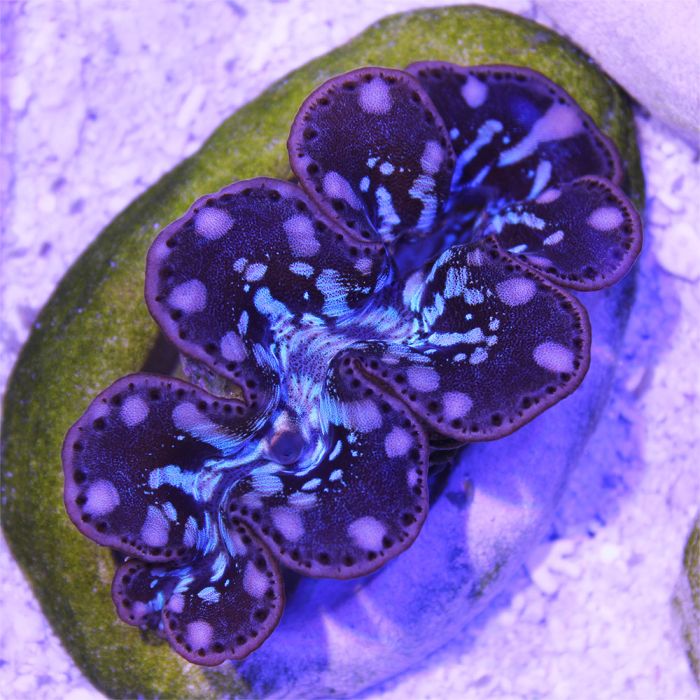Maxima Giant Clam - A Grade
The Tridacna clams are exquisitely colored, very uncommon and highly sought after. They make incredible display animals and thrive under reef conditions. They are peaceful and do not bother any other animal. If threatened they can close their shell tightly. Healthy animals should have a strong response if shadowed or touched, although once established they may become conditioned and show less inclination to close. They will attach themselves to rock with threads from the foot- it is of utmost importance the foot is never damaged as this may lead to the clam's death. Some species may gradually dig themselves into the rock over months or years.
Tridacna clams receive most of their energy from the light. Their lighting needs should not be underestimated, exceeding that of even the most demanding corals. Metal halide is recommended over any other lighting method. Regular additions of phytoplankton may also help, especially for very small individuals. Monitoring of alkalinity and calcium is important for continued shell growth. We recommend Tridacna clams only for experienced aquarists with well established aquariums.
Best tank-mates are very peaceful animals which will not bite or sting the clam. Angelfish, pufferfish, butterflies and the like are not recommended. Pests such as pyramid snails are sometimes seen which may attack the foot. Some cleaning animals such as cleaner wrasse may inadvertently pester clams to death.
One of the most popular giant clams, the Maxima may grow up to 16 inches. Ultra colored specimens are the highest grade, always dazzling and have very eye-catching patterns on their mantels. It is found in a huge array of colors, with turquoise and blue being most common. Any combination of additional colors may be possible, ranging from black to white and every color in-between. It is related to Crocea but grows larger. It is best placed directly on rock, not on the sand.
















